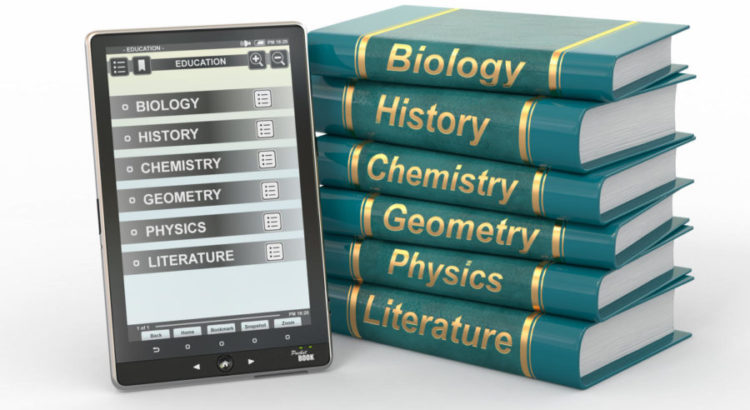By: Catherine Idzerda
Imagine a textbook that changed every year.
Ineffective lessons would disappear from its pages and be replaced with others. As state education standards evolved, textbooks would absorb those changes, saving the school district and, by extension, the taxpayers money.
Best of all, students could write on their pages.
Textbook companies have already made it happen.
It’s educational software, and it has been around in one form or another since the beginning of affordable home computers. Some educational experts believe it’s inevitable schools will end up with all software-based curriculum. It’s a move that could save thousands of dollars while giving educators a more flexible format.
Earlier this month, the Janesville School Board approved $131,747 to buy a final round of Chromebooks for high school students. Classrooms across the district have laptops for students to use, but this is the first time students will have an electronic device they can take home.
But that doesn’t mean the district is on its way to an all-electronic curriculum, said Allison DeGraaf, Janesville School District Director of Learning and Instruction. In fact, the decision to provide all high school students with Chromebooks was more about equal access than software vs. textbooks, she said.
Still, in the past five years, spending on textbooks and workbooks has declined significantly, according to Janesville School District budget documents.
In the 2013-14 school year, the district spent $762,685 on textbooks. That number dropped to $225,845 in the 2015-16 school year but then went up again to $396,541 in 2016-17.
In the 2017-18 school year spending on textbooks and workbooks dropped to $181,816, a 76 percent drop over five years.
Part of the spending changes are due to the district’s textbook adoption cycle, which previously provided reliable funding for books every few years, DeGraaf said.
But in 2008, when the economy went off the rails, the district couldn’t keep up with that cycle. When the economy improved, the district had to play catch up.
District officials are now attempting to re-establish that cycle so it matches the Wisconsin Department of Public Instruction’s academic standards review timeline. When the department changes its standards for a subject, the district would update its curriculum.
But the trend is moving away from textbooks, local and national educational officials say.
Part of it has to do with cost.
Software for a single subject might cost $15 per student, DeGraaf said. That amount would include updates for the next five or six years. Software companies get ongoing feedback from teachers both about content and ease of use and then make changes.
In addition, software often provides more “differentiated” lesson plans, different ways of teaching the same materials to students who need extra help or want additional challenges.
Of course, that doesn’t include the cost of the laptops. The district paid $319 each for its Chromebooks and the insurance for them, according to a memo included in the July 10 school board packet. The lifetime of such devices varies.
A textbook might cost between $80 and $120 per student.
Still, it’s not just one format versus another. Textbook companies will often provide additional online resources or lessons or information or digital content for electronic whiteboards, DeGraaf said.
Electronic whiteboards are large, interactive computer screens that are common in classrooms.
For Degraaf and other district officials, it’s not about deciding between textbooks and software but about finding the curriculum that best aligns with state standards and the school district’s promises.
The promises are a set of five-year goals in areas such as finances, health and safety, and student achievement.
Prominent among the student success promises is a move from direct instruction to “engaged and empowered instructional opportunities.”
Direct instruction involves the traditional style of teaching where teachers lecture and students take notes.
“Engaged” means the students are involved in the learning. It’s a method that requires students to do more critical thinking and problem solving. For example, instead of taking notes about the difference between anaerobic and aerobic bacteria, the roles of carbon and nitrogen in decomposition, and the work of micro- and macro-organisms, students would create a food composter and then ask themselves questions about how and why it works.
Laptops lend themselves to that kind of learning. If students are working on essays in class, the teacher can be reviewing their work in real time and offer them suggestions. Students will be able to record their results from problems and experiments they’re working on and collaborate with their classmates on projects, DeGraaf said.
It is one of the many steps the district has taken away from textbooks, but it’s one officials say makes sense.
*Fuente: https://www.gazettextra.com/users/profile/cidzerda/






 Users Today : 2
Users Today : 2 Total Users : 35460543
Total Users : 35460543 Views Today : 2
Views Today : 2 Total views : 3419484
Total views : 3419484